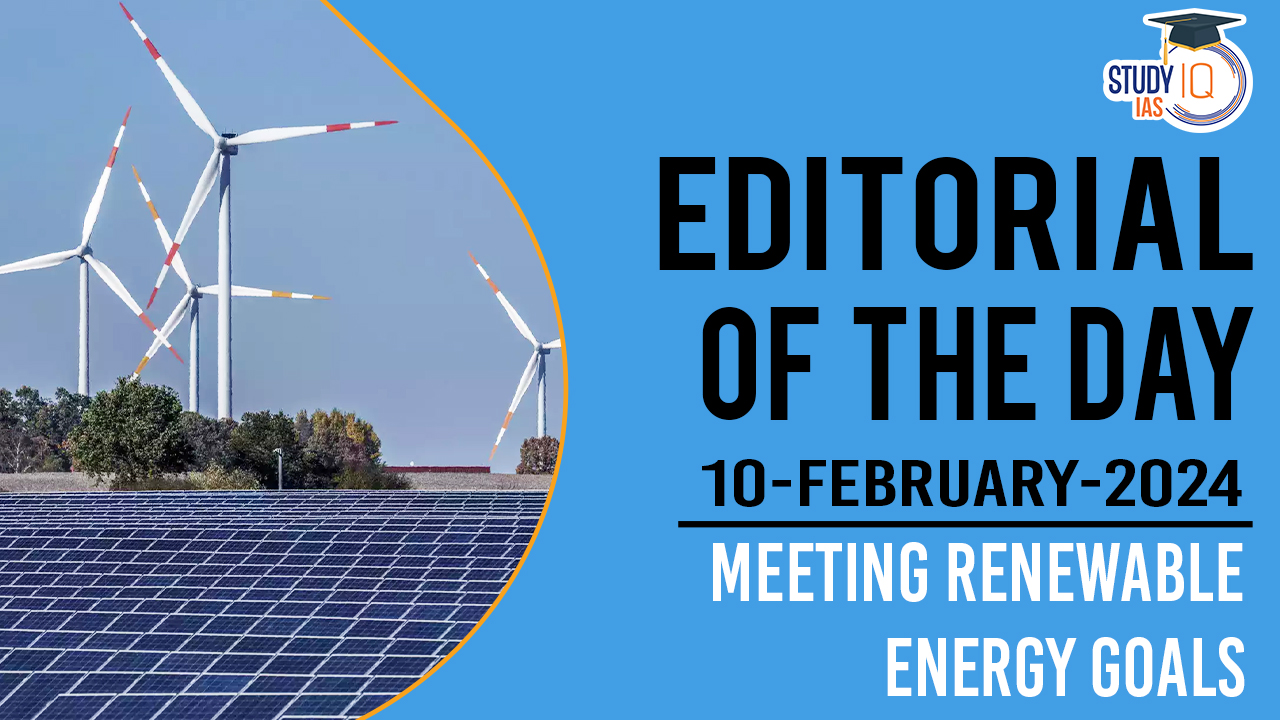Table of Contents
Context: India’s commitment to becoming greenhouse gas (GHG) neutral by 2070 involves significant expansion in renewable energy (RE), targeting 500 GW by 2030.
Progress and Policies for Renewable Energy
- RE Expansion: India aims for 500 GW of RE by 2030, with progress including 72 GW of solar and 44 GW of wind power.
- Power Purchase Agreements (PPAs): These projects typically involve 25-year power purchase agreements with state distribution companies (discoms).
- Commercial and industrial (C&I) Capacity: An additional 32 GW has been added in commercial and industrial capacities.
- “Must Run” Status: RE projects are given priority for power evacuation, barring safety concerns.
- Supportive Measures: Include late payment surcharge waivers, interstate transmission waivers, and renewable purchase obligations.
- Cost Reductions and Investment: Capital cost reductions, competitive bidding, and foreign investment have supported RE growth.
Challenges for Renewable Energy
- Storage and Network Needs: Achieving the 500 GW target is challenging without adequate storage and extensive power exchange networks.
- Surging Demand: Post-COVID demand increases and peak deficits, particularly during evening hours, pose challenges.
- Discoms’ Hesitancy: There’s a shift towards long-term PPAs for solar and wind to meet the growing demand and deficits.
Market Trends
- RE Reliability: Recent bids require RE generators to match hourly demand, making RE comparable to coal in reliability.
- FDRE Bids: The introduction of firm and dispatchable RE bids by SECI necessitates a mix of solar, wind, and storage.
- Storage Solutions: Pumped hydro is crucial for grid stability due to lower capital costs, with batteries also becoming important.
We’re now on WhatsApp. Click to Join
Solutions and Strategies for Renewable Energy
- Managing Intermittencies: Generators need to manage intermittencies with storage solutions like batteries, which may become more affordable due to incentives.
- Excess Generation: Selling surplus power to C&I consumers or on power exchanges could address excess generation.
- Merchant Sales: Trading excess generation requires structures for guaranteed floor prices to ensure bankability.
- Central Agency Guarantee: A central agency could offer guarantees to enhance project competitiveness and support green hydrogen ambitions.


 Monasteries in India: List of Major and ...
Monasteries in India: List of Major and ...
 National Doctor’s Day 2025: History, T...
National Doctor’s Day 2025: History, T...
 Bonalu Festival 2025: Date, History, Rit...
Bonalu Festival 2025: Date, History, Rit...





















